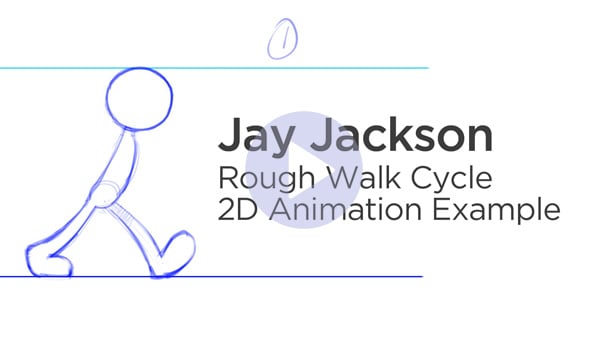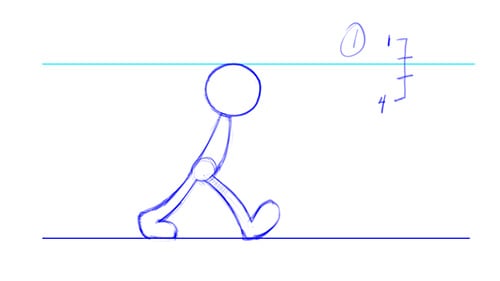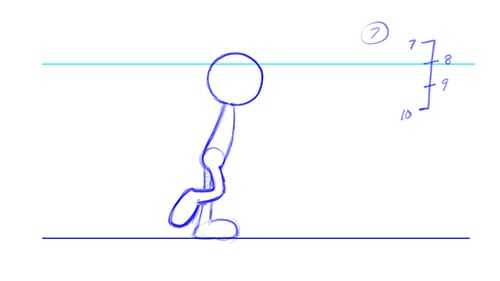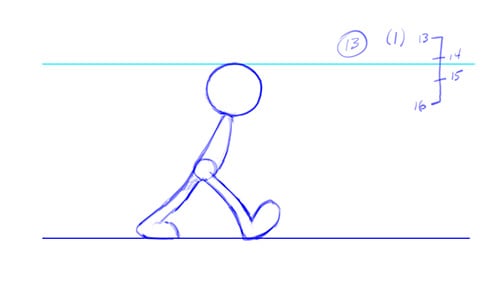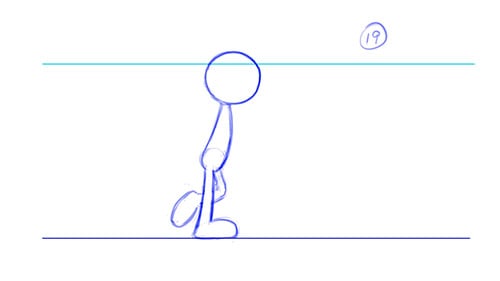2D Animation: Walk Cycles & Character Movement
Bring your 2D character to life in this 6-Week Workshop
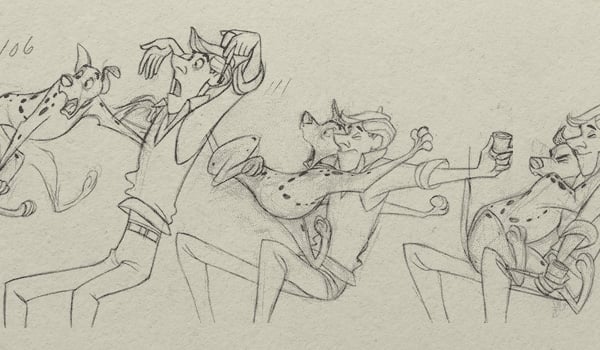
Character Movement Example by Milt Kahl
Tell a Story through 2D Character Movement
Movement is at the heart of every story, be it a subtle head tilt or a boisterous cartwheel. In order to tell an engaging story, it’s important to master the fundamentals of character mechanics.
We’ll jump right into the Character Movement & Walk Cycle Animation course by focusing on body mechanics, a term used in animation to describe the movement of biped (two-legged) characters.
When animating, it’s important to think of your character as a series of connected “parts” so that their entire body moves in a believable way. Get comfortable with body mechanics now so you don’t end up with stiff and wooden performances later on.
In this workshop, you’ll apply the core principles of body mechanics to animate believable character movement. You’ll follow in the footsteps of legendary 2D animators as you master classic exercises like walk and run cycles before moving on to more complex character movements.
6-WEEK COURSE
$899 USD
Pro Animators Mentor You to Be Successful
This workshop allows you to learn, practice, and get 1:1 feedback and reviews from our mentors. Through in-class examples and homework assignments, they’ll present 2D workflows and techniques that are useful to every animator.
You will have the chance to learn from our mentors in live conversations as they share insights about what studios are working on and what qualities they look for in an animator. Our mentors will work directly with you to grow and improve your skills, whether you’re interested in studying classic animation techniques, telling your own story, or enhancing your 2D character animation experience.

Jay Jackson
Animator
Jay Jackson is an incredible character animator, mastering traditional 2D workflows, 3D character animation, and modern 2D digital animation techniques. He’s worked on 2D animated Disney classics such as The Little Mermaid, Tarzan, Hercules, and The Black Cauldron, as well as a host of other films. Jay trained under the legendary Eric Larson, one of Walt Disney’s “Nine Old Men.” Jay has been teaching and mentoring with Animation Mentor for over 12 years, bringing lessons from the greats to the next generation of animators.

T. Dan Hofstedt
Animator
T. Dan Hofstedt’s resume reads like an all-time great list of animated classics. Seven years at Sullivan-Bluth, sixteen years at Disney, nine years at Warner Bros and four at Sony Imageworks, T. Dan’s career has spanned decades where he has worked on both 2D and 3D projects. His foundation is the classic “actor with a pencil” (or a computer), where no matter what the medium is, the emphasis is on character. You can see his work on 2D animated Disney classics such as Aladdin, The Lion King, Tarzan, and Mulan, as well as TV classics such as the Animaniacs, and the Smurfs.
Choose Your Mentor
Review available mentors and Q&A times. All Q&A times shown in Pacific time.
1-on-1 Feedback from a Studio Pro
During this 6-week workshop, you’ll have live Q&As with your mentor each week, in addition to receiving an assignment designed to build your skills. Plus, your mentor will review and critique each of your assignments and provide you with a video of their feedback so you can improve your work.
Take the Next Step in 2D Animation
Bring your character to life through exciting physical performances and dynamic movement. Make your 2D character walk, run, and dive right into their own adventure. Using a mix of traditional and modern animation workflows, Mentor and longtime Disney Animator Jay Jackson will guide you to success.
Parts of a Walk Cycle Animation
2D Animation Student Gallery
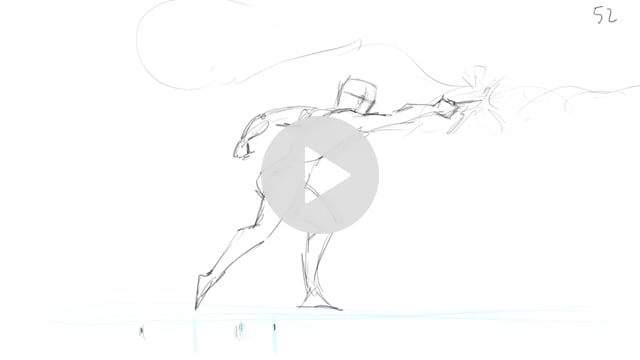
Dan Reynolds
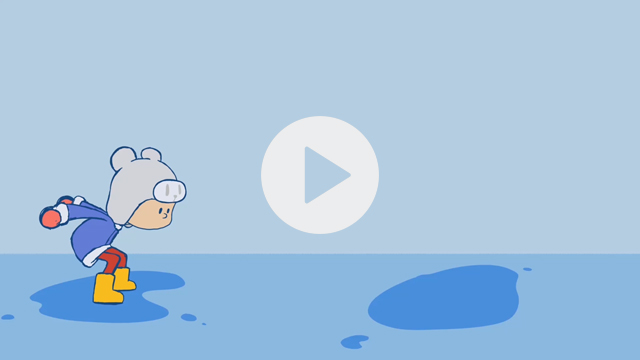
Adam Gillespie
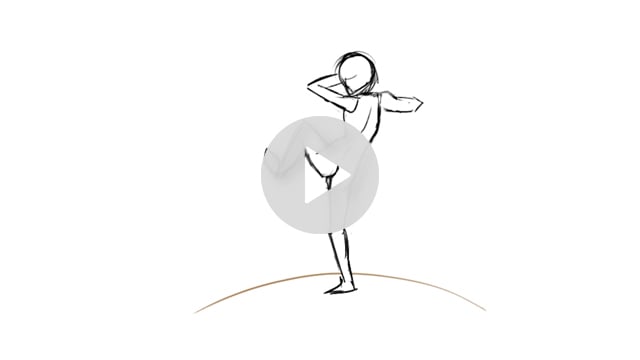
Jade Bisht

Adam Gillespie
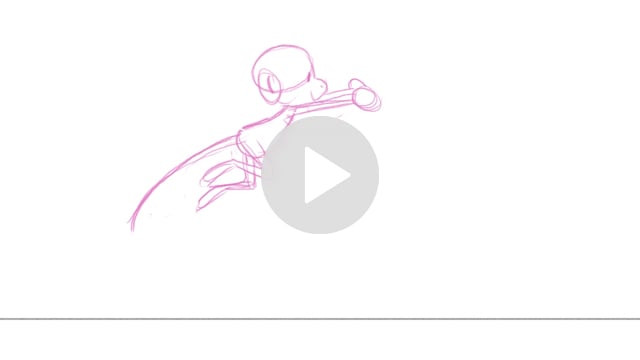
Anna Van Schaijk
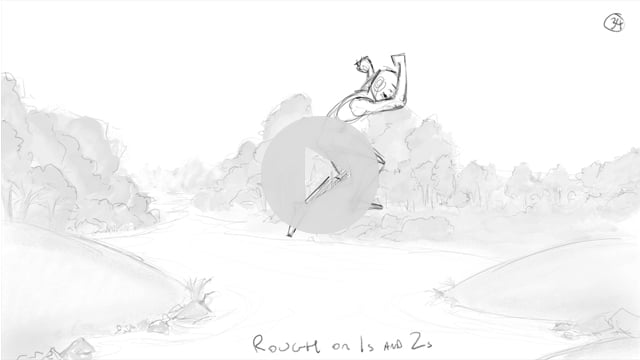
Dan Reynolds
What You’ll Learn in 2D Animation: Walk Cycles & Character Movement
Week 1
Walks and Locomotion
Animating a convincing walk with strong mechanics is an important skill for every animator to master. In this session we’ll look at the core structure of a “vanilla” walk and how to approach blocking out your animation using 2D techniques and workflows in Toon Boom Harmony or Rough Animator.
Week 2
Personality and Character
In this session we’ll look at how to design an appealing character to animate. We’ll apply those concepts to a personality walk and also look at how to animate details like the overlapping motion of hair and clothing.
Week 3
Weight and Momentum
The mechanics, weight, and momentum are critical components of body mechanics. In this session we’ll study and apply these concepts to a character run.
Week 4
Dynamic Movement
In this session we’ll study the body mechanics of jumping and landing. We’ll also look at how to use staging, anticipation, follow through, and overlap to create dynamic and interesting movement.
Week 5
Athletic Movement
This week we’ll dig deeper into more complicated examples of body mechanics. We’ll look at how to apply weight, balance, and exaggeration to create a compelling performance.
Week 6
Review and Recap
You made it! In this final session we’ll complete our discussion of body mechanics and character performance. We’ll put together a reel of your assignments from this workshop and note what’s working well and where things need to be developed more.
Course Requirements for 2D Animation: Walk Cycles & Character Movement
Course Details
LIVE Q&As | Weekly 1-Hour Q&As
ASSIGNMENTS | 5 Animation Exercises
SOFTWARE | Harmony by Toon Boom or Rough Animator (or equivalent digital animation software)
HARDWARE |Meet Minimum Requirements
DRAWING HARDWARE |We recommend that students use a drawing tablet or screen for this workshop
- Wacom, XP-Pen, Huion, or equivalent are common brands to consider.
AGE | 18 Years or Older
LANGUAGE | Taught in English
Skills You Need Before You Start
This workshop is not graded so that you are comfortable learning at your own pace, but we do ask that our students meet the following requirements:
- Basic understanding of the principles and workflows of 2D animation, including believable weight, timing, spacing, and arcs
- Intermediate level of drawing ability is recommended. Students will be drawing full body (though simple) characters in each assignment
- If you are new to 2D animation, we have a workshop for you! Check out 2D Animation for Beginners.
What You’ll Learn
Pick up your where 2D Animation for Beginners left off. With the fundamental principles under your belt, you can get into more of the fun stuff: making your characters walk, run, jump, and more! In this workshop you will:
- Learn to animate a believable walk cycle, one of the building blocks of character animation
- Bring personality to your walk to create memorable characters
- Learn to craft clear drawings in sequence, so that each shot flows into the next and your work remains clear to the audience
- Apply the principles of animation to full body characters and performances
- Incorporate weight and momentum into dynamic character runs
- Use body mechanics principles to animate exciting, athletic movement like climbing, jumping, and dancing
- Gain intermediate-level skills with digital tools and software, like Toon Boom Harmony or Rough Animator
FAQ for 2D Animation for Beginners
What is 2D animation?
2D animation is a classic animation style where objects are animated in two-dimensional space, meaning they only have width and height.
How is 2D animation different from 3D animation?
The major difference between 2D and 3D animation is the lack of depth. When something is not visible in a 2D it doesn’t exist. In 3D every object is always present even when it is behind something. This is something that 3D animators always have to keep in mind.
What are traditional animation techniques?
In technical terms, traditional animation uses a 2D format and is created at 24 frames per second. In terms of drawing style, traditional animation closely follows the 12 Basic Principles of Animation, which were created by some of the animation pioneers at Disney. We have a whole series on the 12 Principles of Animation on our blog.
What 2D Animation Students are Saying
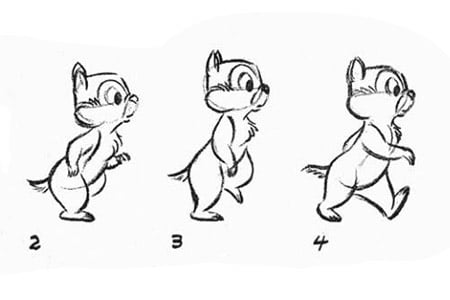
Jay is the Best
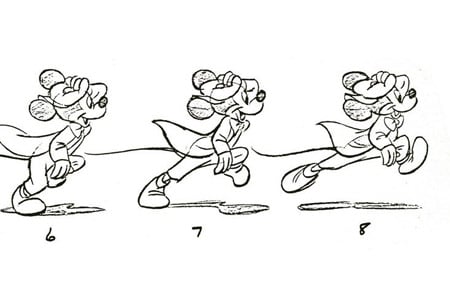
Improved So Much
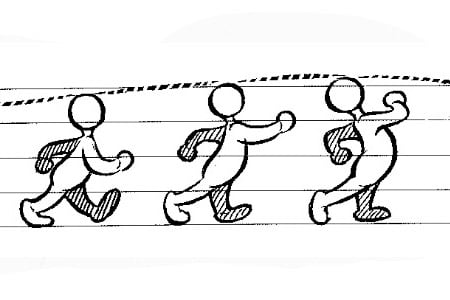
2D Helped My 3D Animation
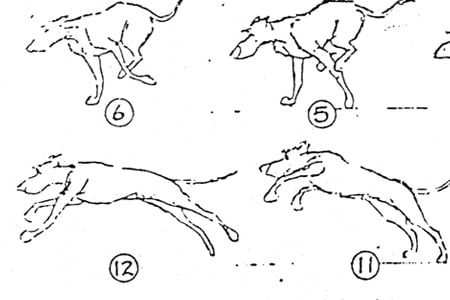
A Wealth of Insight

Jay is the Best

Improved So Much

2D Helped My 3D Animation

A Wealth of Insight
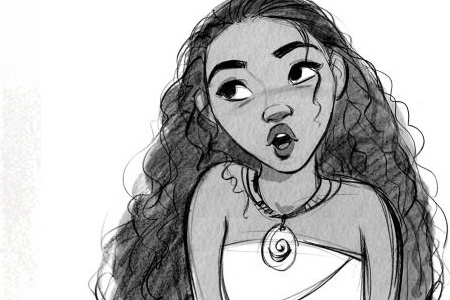
Helpful & Insightful
I loved the critics I received from my assignments they were insightful and helped me to push myself and work hard on each assignment.
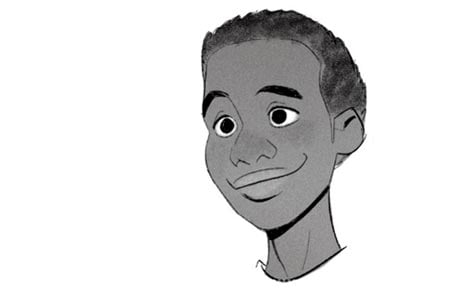
2D Animation Software
I liked the live demos and the examples of different animation principles. I also appreciated that Jay took the time to walk through how to use the different types of 2D animation software and made sure everyone was set to animate.
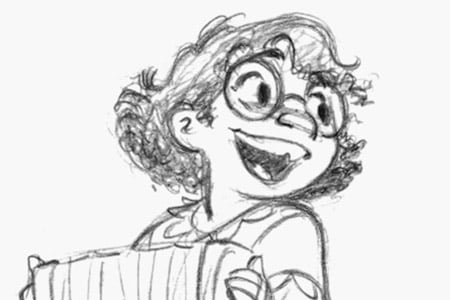
Fantastic Mentor
Jay was a fantastic mentor and I’d love to take more classes with him. He has a chill and approachable attitude and gave detailed critiques drawing from decades of experience that I always looked forward to and learned a lot from.
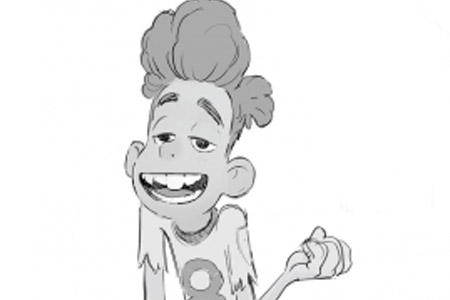
Good Challenge
The progression from assignment to assignment flowed well providing a good challenge to learn, but not so hard that it is impossible for a beginner.
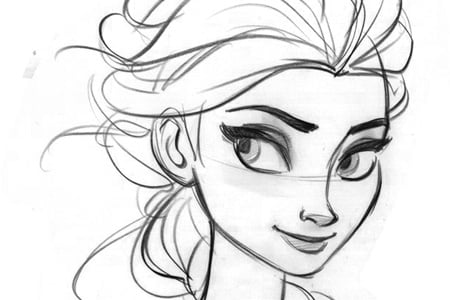
Thorough and Professional
My favorite thing about Jay’s teaching style is that he is very patient and will work with you at whichever skill level you are. He is willing to give thorough, professional, and honest feedback which is critical for growth in the craft of animation.
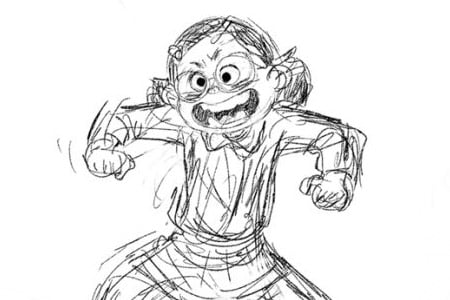
Studying Under a Master
Jay has so much experience and articulates his lessons well. It was a great opportunity to study under a master. He makes animation look effortless! I want to be that way someday!
Related Courses
If you’re interested in 2D Animation, we think you’ll love these courses!
2D Animation for Beginners
6-Week COURSE
Learn the fundamentals of 2D Animation from a Disney legend.
Cartoony Animation
for 3D Animators
6-Week COURSE
Plus your animation by pushing your characters to their limits.
Visual Development:
Principles of Design
6-Week COURSE
Design appealing characters using shape language and color theory.
Story I: Storyboarding
Fundamentals
6-Week COURSE
Sophisticate your storyboarding craft and add core skills & techniques to your tool box.
Story II: Intermediate Storyboarding
6-Week COURSE
Building on foundations, further develop your storytelling & story development skillsets.
